William Gibson
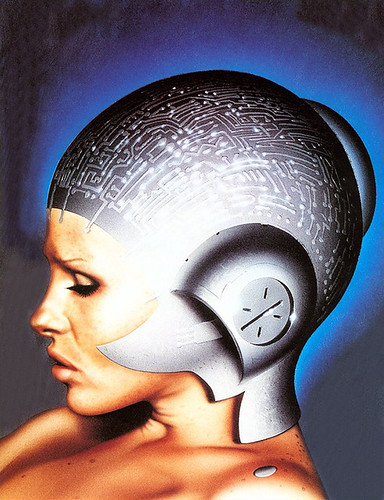 ("Burning Chrome" cover art by Chris Moore) Beside being the quintessential force behind cyberpunk, as well as an inspiration to countless other "name-your-punk-preference" literary movements, William Gibson is one of the true stylists of English language, molding and injecting it with his own edgy brand of "noir". His fiction can be cold and detached in tone, but his cocktail of tech and pop-culture references laced with darkly poetic imagery - an intoxicating mix if there ever was one - proves irresistible to many readers, an addiction that's almost impossible to shake off. Little known facts about William Gibson: - At the age of twelve, he "wanted nothing more than to be a science fiction writer" - dodged the draft during the Vietnam War by emigrating to Canada in 1968 - his father choked to death in a restaurant while on a business trip - considered writing a thesis on the topic of hard science fiction novels as fascist literature - explaining his recent turn to realist writing, he notes: "Explore the present. Earth is the alien planet now." - rejects any notion of prophecy, even after coining terms "cyberspace", "matrix", etc. - never really been very interested in computers themselves. "I don't watch them; I watch how people behave around them." Scroll for the reviews and ratings of his fiction: "All Tomorrow's Parties" (nv) (Bridge Series) © New Worlds, 1998 novel: 1999, Putnam / Berkley --sf novel : 2000 Locus /15 --foreign novel : 2001 Seiun --/ fourth place sf novel --/ wonder award --/ style award --/ idea award "The Angel of Goliad" (with Bruce Sterling) (exp. into "The Difference Engine") © Interzone, Oct 1990 --/ fourth place sf novella --/ wonder award --/ style award --/ idea award ----------------------------------------------  "The Belonging Kind" (with John Shirley) © Shadows # 4, Charles L. Grant, 1981 Burning Chrome, 1986 --/ fourth place sf story --/ wonder award --/ idea award Exploring a different landscape here: that of an estranged human soul among a senseless social scene, the alienation vs. adaptability of our beleaguered "self" in a cold urban environment. It does not have a typical Gibson setting (such as "Sprawl", where most of his novels and stories take place) It is also perhaps William Gibson's only venture into the horror genre (guided by the capable John Shirley, who is certainly not a stranger to the murky and weird literary underground). It tells of a strange transformation from human to... something else. A guy meets a girl in a bar, follows her to another bar, and notices that along the way, she has morphed into someone completely different. It turns out to be the "adaptability" technique of a a weird alien kind, but very useful in our society, making our guy obsessed with it and desiring it above anything else. review by Avi Abrams: 2-Sep-06 (read in 1989) ---------------------------------------------- 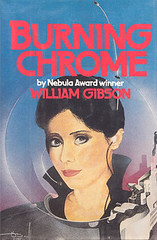  "Burning Chrome" (coll) © 1986, Arbor House --collection : 1987 Locus /2 --/ second place sf collection --/ wonder award --/ style award --/ idea award Cyberpunks are dead, long live steampunks... cowpunks... softpunks... biomorph punks... yogurt punks... and cream cheese ones, too. It is easy to laugh now, looking back twenty (or thirty) years, remembering the shock of encountering a brand new sub-genre of literature, and a crazy one to boot. Gibson might not have been the first, but he was the most intense, with a slightly mad sparkle in his eye, going in the front of the (now respectable) cyberpunks, splattering words like "cyberspace", "web cowboy", "hacker's ice" all over the reader's innocent face, breaking established styles and motives, and emerging as a genius of huge lyrical (yes, lyrical!) and visionary magnitude. Nobody calls his cohort "cyberpunks" any more, the alternative became the mainstream (same as in music today). This is a seminal collection, issued at the same time as the classic "Mirrorshades" anthology. 1986 was the year when cyberpunk "made it" to the shelves and the critic's approval in one sparkling "download". The recent "Matrix" movies took the veil of enigmatic beauty off the futuristic hacker's lifestyle, and made it commonplace. The good old books and stories, however, did not lose any of the punch and excitement. Still the best, by far. And if cyberpunks are not in vogue anymore, what is? what is next? Well, read the first sentence of this review again. Maybe the anti-consumerism grocery monster stories? We shall see. review by Avi Abrams: 31-Aug-06 (read in 1997) ---------------------------------------------- 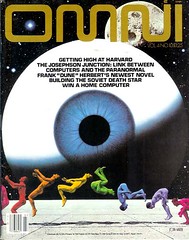 "Burning Chrome" © OMNI, Jul 1982 Burning Chrome, 1986 --novelette : 1983 Nebula --novelette : 1983 Locus /17 --novelette : 1983 SF Chronicle /3 --novelette : 1999 Locus All-Time Poll /13 --/ fourth place sf story --/ wonder award --/ idea award --/ adventure award A military-grade hacking virus vs. a corporate website. Sounds not very exciting, but believe me, the effect of this story is comparable to blowing up a thick computer manual: big, bold, quick and loaded with deep (though jumbled) technological meaning. This story has the general look and feel of "Neuromancer", "Count Zero" and other Sprawl series novels. Another significant "brick in the wall" of Gibson's world-buiding again gives us many thrills, many dangers and very few hopes in a very inhuman future society. Worthy to read due to the sheer pyrotechnics and exuberance of style. Great summer blockbuster entertainment. review: 2-Sep-06 (read in 1987) ---------------------------------------------- 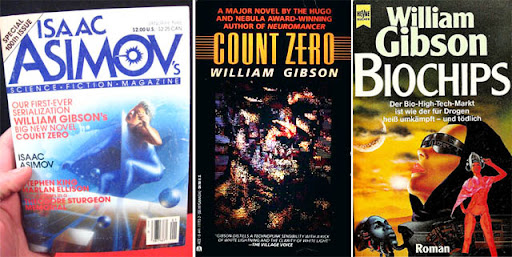 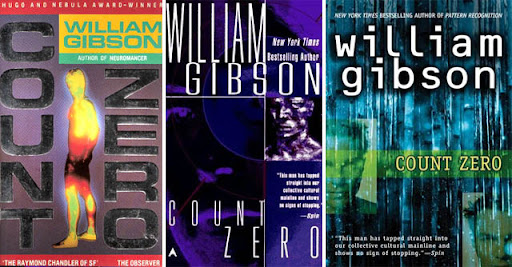 William Gibson "Count Zero" (nv) (Neuromancer #2) © IASFM, Jan 1986 Arbor House / Gollancz, 1986 --novel : 1987 Hugo --novel : 1987 Nebula --sf novel : 1987 Locus /3 --novel : 1987 British SF --novel : 1987 SF Chronicle /2 --/ third place sf novel --/ wonder award --/ idea award --/ style award --/ adventure award If Neuromancer planted the seed of cyberpunk, Count Zero sees it begin to flower into something fractal and immense. It builds well on its predecessor; taking mind-blowing ideas and concepts of the previous book and developing them in unexpected, yet entirely natural, ways. From a narrative standpoint the book is chancier with three protagonists, each enmeshed in their own lushly described Gibson-esque world (all taking place in familiar "Sprawl" setting). They start on quite dissimilar paths only to find their stories weaving together into essentially one crime epic, seen from three points of view. Gibson continues sprinkle his prose with small, sharp insights that cut through veneer ("sci-fi is just a wet-dream for nerds") and become profound predictions for some 50 years ahead. More than two decades after the original publication it remains an intense and cool-minded examination of humanity’s foibles, for example, our seemingly insatiable desire for maddeningly intrusive and loud media. Hacker sub-culture, religious idealists, art investors and businessmen seem quite happy to navigate through the grey areas of the law, motivated by greed and notions of "creative destruction". Victims are led to believe they are the ones who call the shots, and vice versa. Corporate espionage provides ubiquitous set of thrills. Voodoo easily mixes with artificial intelligence, wild architecture and street culture - all presented in newly minted tech jargon and ideas which already may feel familiar, but only because we were so eager to adopt them. If the book seems cold, it is not for lack of strong characters. Almost documentary-like, reminiscent perhaps of Truman Capote's mainstream classic "In Cold Blood", Count Zero revels in detached observation rather than heart-wrenching melodrama. Somebody compared reading cyberpunk to listening to virtuoso jazz performance, and indeed, this book is brimming with disciplined improvisation and stylized burst of sheer orgasmic exuberance. Review by Baz Anderson ---------------------------------------------- "The Difference Engine" (nv) (with Bruce Sterling) © 1990, Bantam Spectra / Gollancz (exp from "The Angel of Goliad") © Interzone, Oct 1990 --sf novel : 1991 Locus /8 --novel : 1991 British SF --novel : 1992 Nebula --second place : 1992 Campbell --sf novel : 1992 Locus /20 --long-form : 1992 Aurora --/ second place sf novel --/ wonder award --/ idea award --/ style award ---------------------------------------------- 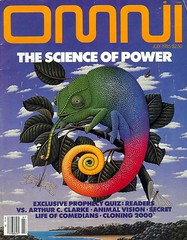 "Dogfight" (with Michael Swanwick) © OMNI, Jul 1985 Burning Chrome, 1986 --novelette : 1986 Hugo --novelette : 1986 Nebula --novelette : 1986 Locus /5 --novelette : 1986 SF Chronicle /2 --/ fourth place sf story --/ wonder award --/ style award "Top Gun" meets "A Scanner Darkly". A darkly intense tale about fighter jet "flight simulation/virtual reality" warfare. Quite predictable, but lively and very cinematic. Ultimately forgettable joint effort between two giants in the field... produced a mouse, albeit with airscoops and ailerons :) review: 2-Sep-06 (read in 1987) ---------------------------------------------- 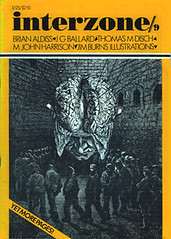 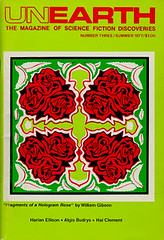 "Fragments of a Hologram Rose" © UnEarth, Sum 1977 Interzone, Aut 1984 Burning Chrome, 1986 --/ fourth place sf story --/ style award A moody, sharp-edged interlude, a cyberpunk "still life" of sorts, that made its way into a novel but still stands out on its own. To understand Gibson's writing, sensibilities, and paradigm you have to be equally fascinated with an intense urban culture (such as of Japanese cities; the photograph below gives you an idea of some of their "cool congestion") and frustrated by the plainness of middle class American lifestyle, lost in an infinity of strip malls. Add frenetic, restless imagination, "noir" mood and pulp action, and you'll get a poetry of neon-lights and metaphors of concrete that will either unravel or "cement-frieze" your soul. review by Avi Abrams: 2-Sep-06 (read in 1989) ---------------------------------------------- 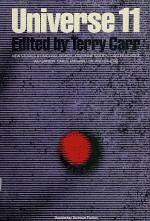 "The Gernsback Continuum" © Universe # 11, 1981 Burning Chrome, 1986 --short story : 1982 Locus /24 --/ third place sf story --/ wonder award --/ idea award --/ emotion award This is a story which needed to be written long time ago - a hymn to "retro-future", gone but fondly remembered. The futuristic images from the thirties and forties illustrations paint the kind of future that will never be - at least stylistically speaking. Streamlined buildings and rocketlike flying cars, imperial architecture, art-deco and gothic elements splashed with chrome and served on a grandiose scale - when we look at these illustrations from the early pulps (or various "Futurama" photos from the Fifties) we feel some deep strange longing rise up inside us. A desire for such retro-future to occur in reality, against all odds of technology and logic; a future somehow more exquisite and noble than the one we see ahead of us. This wish is fulfilled in this story. Due to some quirk in the continuum, the cumulative dream of the Gernsbeck era (or rather the Thirties' concept designs) comes to life and starts to haunt our present for real... Somebody should make an animated masterpiece based on this. The movie "Sky Captain" came close, but it hardly matches the pomp and scale of the original "fever dreams" of fantastic art Michelangelos. review by Avi Abrams: 2-Sep-06 (read in 1989) ---------------------------------------------- 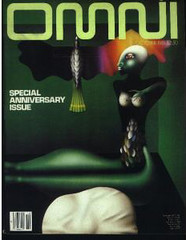 "Hinterlands" © OMNI, Oct 1981 Burning Chrome, 1986 --short story : 1982 Locus /21 --/ third place sf story --/ wonder award --/ style award --/ idea award --/ adventure award A winner. This story stands well above standard SF fare, as it combines the blockbuster qualities of the best pulp-style space adventure with fringe culture sensibilities (such as collecting alien garbage artifacts on a huge space station and trying to make a sense out of them). It has great visual intensity and a smooth writing style. I had a blast reading it in 1987, comparing it in my mind with such works as Pohl's "Gateway", Strugatskie's "Roadside Picnic", and generally squeaking in delight after every other paragraph. Cool stuff. Contact with aliens is shown as a totally incomprehensible event, prone to drive possible "artifact prospectors" nuts. As one such Gold Rush character says in this story: "The contact with 'superior' civilization is something that you don't wish on your worst enemy" review by Avi Abrams: 2-Sep-06 (read in 1987) ---------------------------------------------- "Idoru" (nv) (Bridge Series) © 1994, Putnam / Berkley Rolling Stone magazine, May 30, 1996 --sf novel : 1997 Locus /6 --/ third place sf novel --/ wonder award --/ style award --/ idea award ---------------------------------------------- 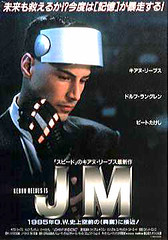 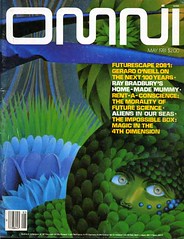 "Johnny Mnemonic" (Molly Millions series) © OMNI, May 1981 Burning Chrome, 1986 --short story : 1982 Nebula --novelette : 1982 Locus /20 --/ fourth place sf novella --/ wonder award --/ style award An instant classic. Take the cereal bytes of hard-crunched computer code, add the honeyed milk of your imagination, and... smother it all in mustard. Yuk. Take the miracle digestion pill of a writer's incredible way with words - and you'll discover that you can eat it for breakfast after all. However, I found it worth reading only once, as it loses something on re-reading. Of course, they made it into a movie, with Keanu Reaves wisely cast as a fumbling hacker lost in the mazes of an Asian metropolis. The movie did not do it for me, but this story already has all the elements of Gibson's and the Matrix world: a spooky mega-bridge, looming over the city as its own mini-universe, a circle of shimmering monitors, aquatic bio-engineered freaks, and the perennial questions of "what reality is" and "who stole my hard drive". Not bad. review by Avi Abrams: 2-Sep-06 (read in 1989) ---------------------------------------------- "Mona Lisa Overdrive" (nv) (Neuromancer #3) © 1988, Bantam Spectra / Gollancz (also as "The Silver Walks") © High Times Magazine, Nov 1987 --novel : 1989 Hugo --novel : 1989 Nebula --sf novel : 1989 Locus /2 --long-form, English : 1989 Aurora W --international fiction : 1989 Ditmar --/ second place place sf novel --/ wonder award --/ style award --/ idea award --/ adventure award "My Obsession" (nf) © Wired 7.01, Jan 1999 ---------------------------------------------- 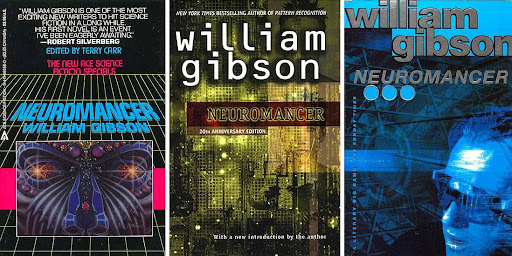 "Neuromancer" (nv) (Neuromancer / Sprawl #1) © 1984, Ace SF Special / Gollancz --novel : 1985 Hugo W --novel : 1985 Nebula W --third place : 1985 Campbell Award --winner : 1985 Philip K. Dick W --first novel : 1985 Locus /2 --sf novel : 1985 Locus /8 --outstanding work : 1985 Aurora --novel : 1985 British SF --international fiction : 1985 Ditmar W --novel : 1985 SF Chronicle W --foreign novel : 1987 Seiun W --sf novel : 1998 Locus /15 --/ FIRST place sf novel --/ wonder award --/ style award --/ idea award --/ adventure award --/ emotion award In 1984 the general reading public got the first view of Gibson’s world, where crossed men get magnificent revenge, where evil AIs manipulate humanity, where women throw more punches than the men (and wear skintight vinyl while doing it), and where questions of morality arise again and again – because there are no good answers. High-technology, pre-internet networks, ass-kickery, drugs, space stations, mean guns and meaner chicks - dirty, violent and tightly written, this is the writing that changed popular space-ship political fiction into something personal, young, and rude. While it helps to remember the political climate of the Eighties when reading “Neuromancer,” I’m surprised at every fresh reading how timeless and sleek it is; it’s no wonder that it won nearly as many awards are there are to win. “Neuromancer” also has my favorite opening line of all time: “The sky over the port was the color of television tuned to a dead channel.” Much to my surprise, it’s the term “dead channel” that may soon mark “Neuromancer”’s age. Inevitably it is brought up as the “first” cyberpunk novel, a fact that is neither true, nor, as the decades pass, particularly relevant. What is relevant is that 20-plus years later, popular culture is just now starting to catch on to what Gibson was dishing out. Perhaps most famously, Gibson wrote “Neuromancer” without the aid of a computer, and indeed, without knowing much about computers at all. This ignorance led to a lesson that every scifi writer, fan and everybody else should learn: your knowledge might be crippling your imagination. Gibson was free to imagine virtual social networks and complex visual interfaces primarily because he had no reason to think otherwise. “Neuromancer” quietly managed to transcend the segregation of genre and become the kind of novel that influences the mind of a generation, and that, friends, is no dog-and-pony show. It should also be made clear that it is not the futurism of “Neuromancer” that inspires such passion, it is in seeing the execution of such perfect balance. Many of us nerds imagine being able to write the next Great American (er, Canadian) Science Fiction Novel, but can anyone ever do it again? A man, a girl, a bad guy – sounds easy, right? Or clichéd? How about a web junky cut off from the net forever, a razorgirl named Molly Millions and a psychopathic Green Beret? Gibson assembles it all with heartbreaking ease while paying homage to Philip K. Dick, Samuel R. Delaney, Roger Zelazny and who knows who else. Even if you’ve already read it, it’s imperative that you stop what ever you’re doing right now – don’t even put the toothbrush down – and begin reading. It is still that good. Review by Sunday Williams ---------------------------------------------- 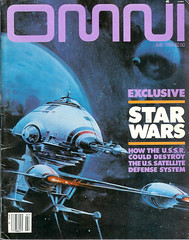 "New Rose Hotel" © OMNI, 1981 Burning Chrome, 1986 --short story : 1985 Locus /19 --/ fourth place sf story --/ wonder award --/ style award Corporate espionage, international crime, the lure of a technological frontier and dark premonitions of technology's ultimate failure - all that makes for a good "noir fiction" experience. I would even trace Gibson's edgy narrative style to Dashiell Hammett, Raymond Chandler and Robert Leslie Bellem. It's fascinating to follow the laconic murderous remarks of haunted characters to their over-the-top action conclusions, and to revel in a convoluted, grand (but often scandalously absurd) plot. review by AA: 2-Sep-06 (read in 1987) ---------------------------------------------- 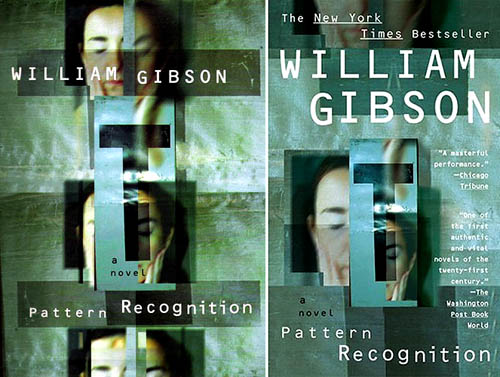 "Pattern Recognition" (nv) © 2003, Putnam --shortlist : 2004 Clarke --novel : 2004 British SF --/ third place sf novel --/ wonder award --/ style award --/ idea award London, Tokyo, Moscow (all present time), graphic design, branding (or the absence of branding), bits of geekology and tech-fetishes at every turn, introspective, splintered tone (emotions shattered by September 11 events, pulled together by cynicism, and fractured again by the inevitability of change)... the jumping, neurotic pace of the story and Gibson's trademark layered writing... All this makes it a complex candy, a book to chew on, a bit tiring at times. You would not want to swallow it in one sitting (which is a good thing, of course). Subliminal angst diluted with brilliant observations, commentaries on symbolism, advertising, internet culture and shorter attention spans, viral ideas born and discarded with a stroke of a pen... streams of details that seem to curve onto themselves like Mandelbrot elements.... Economic and political doomsdays are sampled and considered, crazy commas and grammar are introduced, characters evolve only to fall back into their older selves. The book never really ends, but do you want it to, really? And then there is the character of Hubertus Bigend - at first seen as the charismatic founder of the "viral advertising" agency Blue Ant, but then getting more sinister - even compared at one point to actor Tom Cruise "on a diet of virgins' blood and truffled chocolates". It is Hubertus Bigend that is so "larger than life, heaven and hell combined" (at least in his own eyes) that sticks in memory long after the book is finished. William Gibson brings him back in a sequel "Spook Country", and it's only proper that his character lives on, sort of like Heinlein's Lazarus Long, or Moorcock's Jerry Cornelius. We might see him again, in other novels, by other writers - a sort of "Deus ex machina" for various opinions and rants. Perhaps an improbable character, but as irresistible to watch as a train wreck. In my mind, this book more easily classifies as hipster poetry and /or non-fiction essay than a cohesive thriller - in any way, it is a contemplation. A glue to piece together your fractured erratic self - which may fall apart again, but this is what sequels are for, aren't they? Review by Avi Abrams ---------------------------------------------- 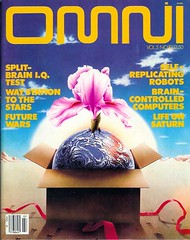 "Red Star, Winter Orbit" (with Bruce Sterling) © OMNI, Jul 1983 Burning Chrome, 1986 --novelette : 1984 Locus /19 --/ fourth place sf story --/ wonder award --/ style award --/ adventure award Great subject matter from the Eighties: the story is set on an aging Soviet space station and deals with some crazed Russian cosmonauts who stayed in orbit for too long. Another good example of such an affront to the pride of Soviet Space Program would be the similar episode in the movie "Armageddon", where the crazed cosmonaut is shown truly "spaced out" and very probably drunk. It is still "a mystery of mysteries" to me, how quite miserable Soviet technology could meet the demands of Russian ambitions in space (or how the rudimentary Sixties computers could put Americans on the Moon). It's almost like the mechanisms and chips themselves smarten up and begin to work better when hearing phrases like "the last frontier" or "the will of the people". Come to think of it, I'm amazed even by the consistent performance of millions of contacts and hundreds of chips in a normal fighter jet. So many things could go wrong and yet they rarely do. review by AA: 2-Sep-06 (read in 1987) ---------------------------------------------- "Skinner's Room" (exp. into "Virtual Light") © 1990, Visionary San Francisco also - OMNI, Nov 1991 --short story : 1992 Locus /15 --/ fourth place sf story --/ wonder award --/ style award "Thirteen Views of a Cardboard City" (exp. into "All Tomorrow's Parties") © New Worlds, ed. D. Garnett, 1997 --/ fourth place sf story --/ wonder award --/ style award ---------------------------------------------- 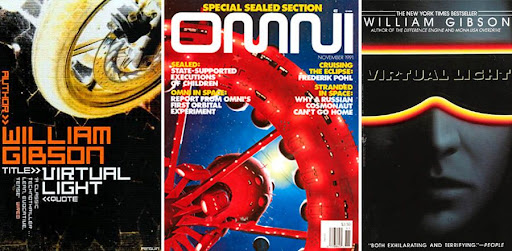 "Virtual Light" (nv) (Sprawl Series) (exp from "Skinner's Room") © 1993, Bantams Spectra / Gollancz © OMNI, Nov 1991 --novel : 1994 Hugo --sf novel : 1994 Locus /4 --long-form, English : 1994 Aurora --long-form, English : 1995 Aurora W --international novel : 1995 Italia /2 --/ third place sf novel --/ wonder award --/ style award --/ idea award --/ adventure award It's interesting that after he finished his masterpiece Sprawl Trilogy of Neuromancer, Count Zero, and Mona Lisa Overdrive, Gibson – the master not only of cyberpunk but of postmodern literature as well – would step back in time but remain in the future to write Virtual Light, the first of another three-part series, the so-called Bridge Trilogy. Interesting, because Virtual Light is a fine and at times brilliant book that owes very little to science fiction, even though it has some elements in common. Set in a very near future, it follows the adventures of bike messenger Chevette Washington and disgraced cop Berry Rydell, who get caught up in a McGuffin chase when Washington impulsively steals a pair of special, high tech glasses. Their chase takes them all over California, most fascinatingly to a squatter city built in the decaying spine of San Francisco's Bay Bridge. Darkly comic, the novel has all of Gibson's trademark vividness and wickedly cool language but is much more of a noir novel with some surreal/science fiction elements than the ferociously dark and vicious Sprawl books. Because of this, it's a much lighter and almost refreshing read, which threw a lot of Gibson's previous readers who may have been expecting something with a sharper edge. Still, when taken on its own or as part of the other Bridge books, Virtual Light remains a work by a master – a master who successfully took a different direction with a wonderful new book. Review by M. Christian ---------------------------------------------- "Where the Holograms Go" © 1993, The Wild Palms Reader ---------------------------------------------- 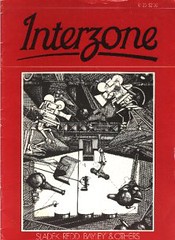 "The Winter Market" © Vancouver Magazine, Nov 1985 also in - Stardate, 1986 also in - Interzone, Spring 1986 Burning Chrome, 1986 --short-form, English : 1986 Aurora --novelette : 1987 Hugo --novelette : 1987 Nebula --novelette : 1987 Locus /4 --short story : 1987 British SF --fiction : 1987 Interzone Poll /3 --novelette : 1987 SF Chronicle/2 (tie) --/ third place sf story --/ wonder award --/ style award --/ adventure award In many ways this story anticipates Gibson's later book "Idoru". Editing neural output became a part of the lucrative business that has replaced records and movies. Editors and virtual stars run the risk of the total dissolution of their entities, as they gradually upload their consciousness into a computer. Virtual entertainment can be quite a "soul-deadening" affair. review by Avi Abrams: 2-Sep-06 (read in 1987) ---------------------------------------------- 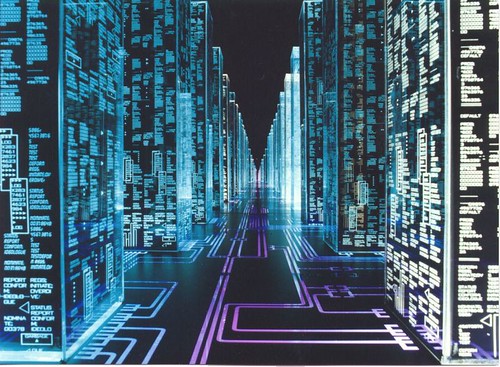 (original unknown) |
Click to go to "Dark Roasted Blend" site
|
|
Collecting Pulp Magazines Ephemera Interview with Avi Abrams |

|
Enchanting Victorian Fairy Tale Art "Then world behind and home ahead..." |

|
Exceptional British Scifi Artwork from the 1950s Space Pulp Art by Ron Turner and other British artists |
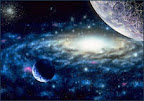
|
Pulp Pleasures: Eando Binder Great space adventure fiction from the 1930s "Where Eternity Ends" and other rare gems |
Also read recent posts:
Author's Pen Names - Most Complete List Ever
The Wonder Timeline: SF&F Restrospective
Space Adventure Article
|
"SF&F Reading Experience" is part of "Dark Roasted Blend / Thrilling Wonder" family of sites. We try to highlight the most entertaining and rewarding science fiction and fantasy, with emphasis on memorable reader experience, not necessarily general acceptance by the critics. Have fun, and delve into our extensive ratings and reviews! Most reviews are written by Avi Abrams, unless otherwise noted. Reviews also appear on our unique historical retrospective page Wonder Timeline of Science Fiction. Feel free to submit your own review, if a particular story is not listed here. All major OFFICIAL AWARDS are highlighted in BLUE ("winner" has a letter "W" by it, otherwise it is a runner-up only) Our PERSONAL AWARDS (ratings) are highlighted in RED and PURPLE: --/ first place : --/ second place : --/ third place : --/ fourth place : --/ cool : (equal to fifth place) ALL "BEST OF" LISTS ARE LOCATED HERE These awards are given in the following categories: - novel : - series : - novella : - story : - collection : Also, there are our personal STYLE / GENRE SPECIFIC AWARDS. These reflect the story's content and the lasting impression on the reader: --/ wonder award sense-of-wonder, "visual intensity" and inventiveness --/ idea award originality of idea / concept --/ adventure award exhilarating plot, excitement / action --/ style award outstanding literary qualities, inimitable style --/ romance award intense and beautiful love / relationships --/ humour award funny and cool --/ emotion award touching, lasting impression, sensitivity --/ shock value altogether wild --/ awesome scale mind-boggling; further enhances sense-of-wonder --/ rare find very hard to locate, mostly from old pulps, never reprinted, etc. Again, please feel free to leave your own review or comment under every writer's entry; also recommend us other stories you liked. |
0 Comments:
Post a Comment
<< Home